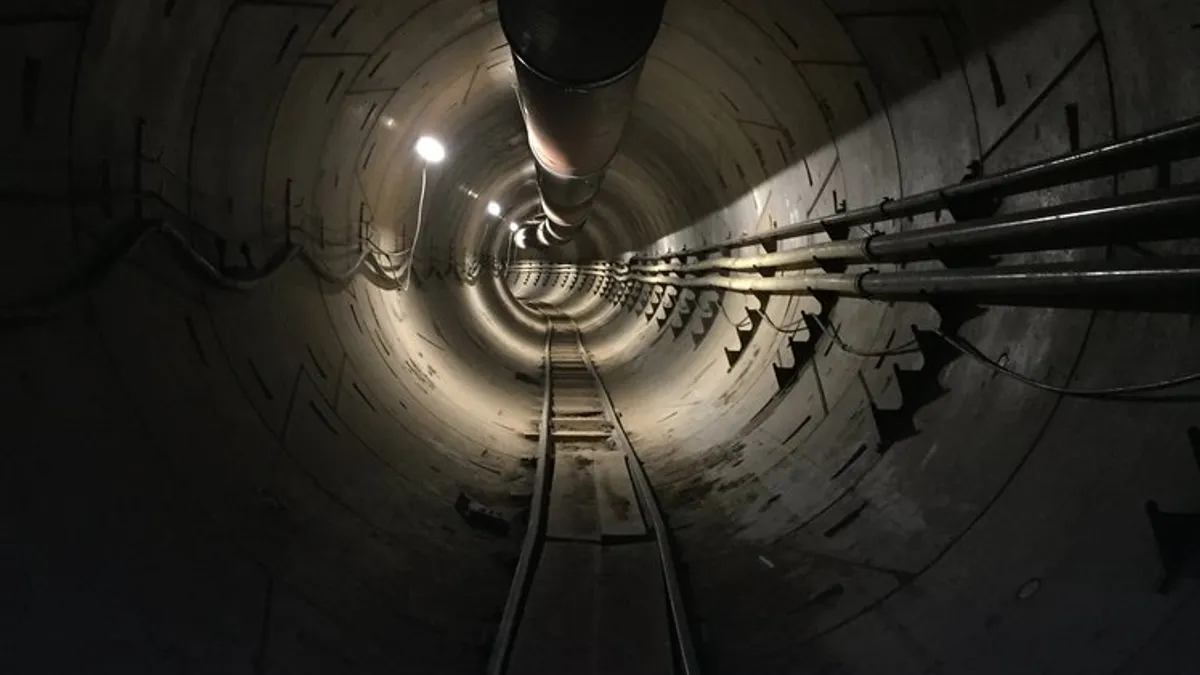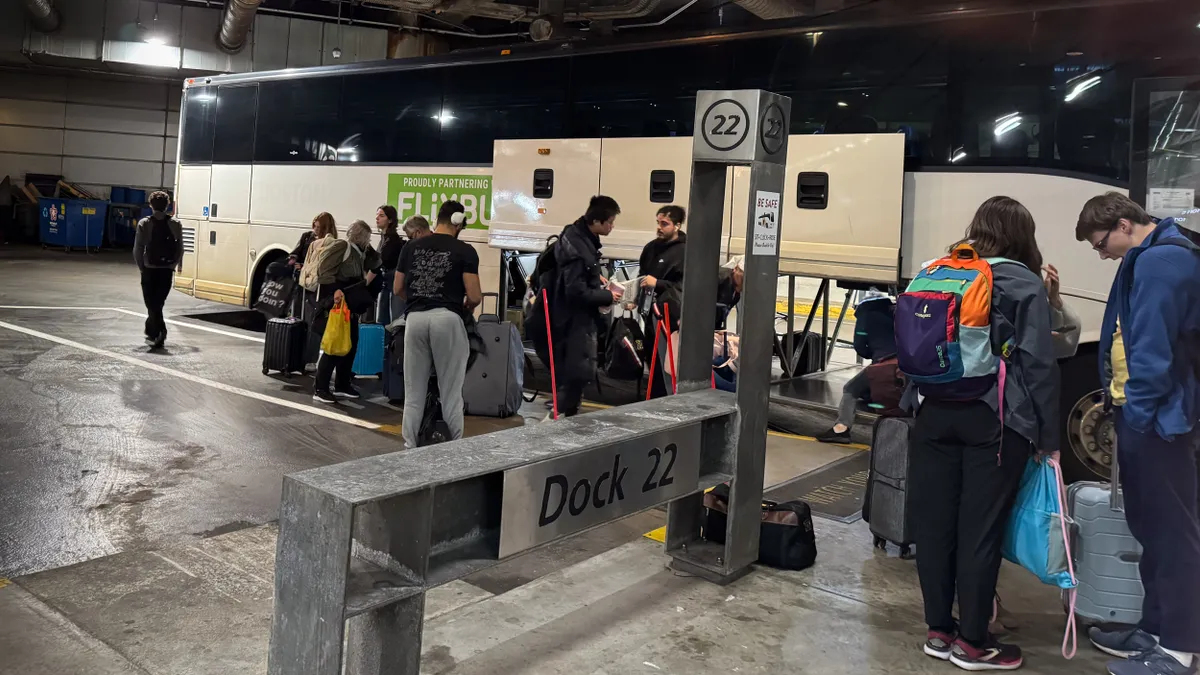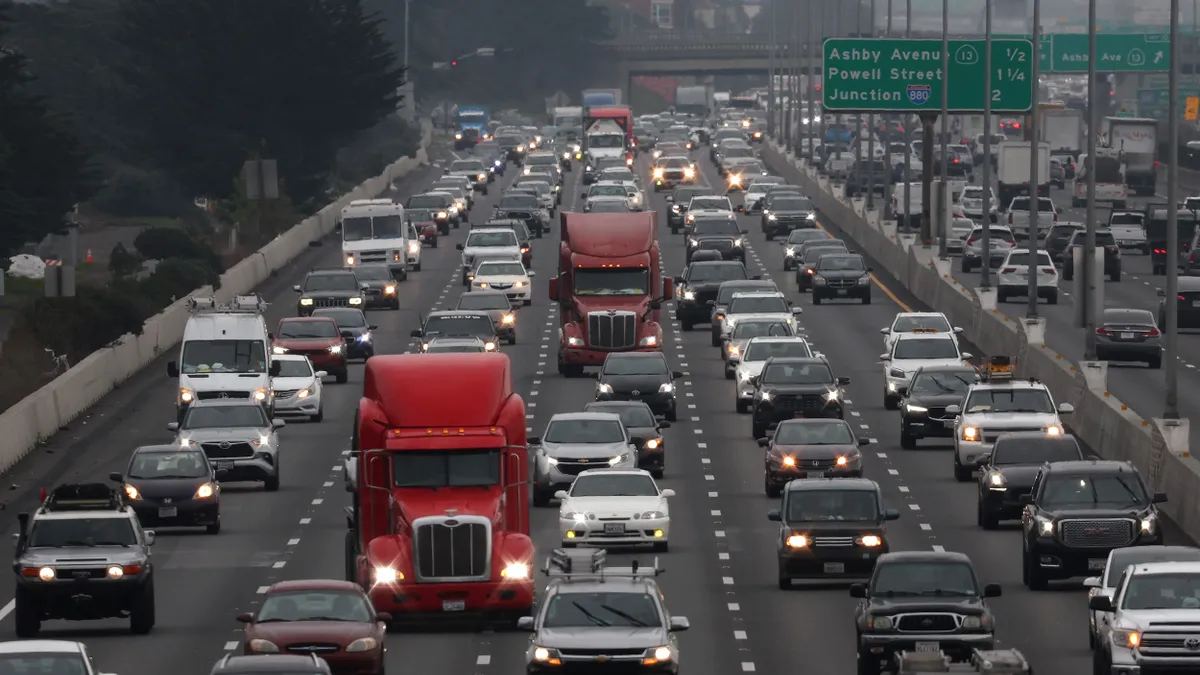Last week, Elon Musk tweeted out that he got "verbal approval" to build a hyperloop — a sealed tube where a pod carrying people or goods can travel free of air resistance — from New York to Washington D.C., with a travel time of 29 minutes. Though he's since walked it back a bit — saying, for example, that he still needed "formal approval" before starting.
As far-fetched as some of Musk's projects, like high-speed travel in a pod, going to Mars or a digitized human brain might sound, he's already proven many of his projects. He could leave a lasting legacy on cities, and how people move through them. Here's some of Musk's projects – and a look at what the disruptive technology could mean for cities.
Tunnels
Musk, after sitting in Los Angeles traffic one time too many, took to Twitter to propose a solution. A boring solution. Literally, boring multilayer, underground tunnels to alleviate street level gridlock. Some weren't sure if he was joking, but five months later he posted a photo of a tunnel staging area.
Musk released a video showing how the tunnels could work with street level traffic, with entrance and exit elevators to the tunnel network that have a footprint about the size of a parking space.
Currently, boring tunnels can cost up $1 billion per mile, according to Musk. That's a prohibitively high price tag for any city – so this won't be an immediate development. It's not an unseen problem for The Boring Company – there's an FAQ on how the company plans to bring the cost of building tunnels down. If prices can be managed and municipalities can start incorporating tunnels that traffic can flow through, private and public transportation in cities would be totally revolutionized as street congestion is cut down.
Electric and Autonomous Vehicles
The autonomous vehicle ecosystem is getting crowded – but Tesla, which got its start in 2003, is already one of the main players. Tesla cars are being developed with capability for semi-autonomous driver assist, with hardware including radar, ultrasonic sensors and cameras. Even more recently, Tesla vehicles are being built with similar hardware plus a computer that is needed for full self-driving capability.
In a tweet, Musk said that the coast-to-coast tests are still on track to take place at the end of the year, with the goal of going "all the way from a parking lot in California to a parking lot in New York, no controls touched at any point during the entire journey." By 2019, Musk predicts that Tesla owners will be able to sleep while the car drives itself.
It’s not all cruising along, though. Last year, a driver using the autopilot died in a crash. Investigators eventually ruled that the autopilot wasn't at fault and Musk and others constantly point out that the 40,000 or so road deaths a year could be cut way down with autonomous vehicles. Musk even argues that it would be "morally wrong" not to put this technology in place.
All Teslas are electric, giving Musk a head start as countries in Europe are starting to mandate the eventual phasing out of diesel and gas vehicles. The new, cheaper Tesla 3, which is poised to be the first electric car with a production that stretches into the hundreds of thousands, could help drive the roll out of more charging stations. There is also a mysterious electric semi-truck in the works with more details coming later this year.
Whether or not it’s because of Tesla, cities are going to have to build infrastructure of electric and autonomous vehicles – their dominance in the marketplace is inevitable. In addition to charging stations, cites could adopt AI systems to help with traffic planning and direction.
Hyperloop
First publicly mentioned in 2012, infighting and lawsuits slowed the project down but Hyperloop One completed its first test earlier this year. It only reached 70 mph, but co-founders of Hyperloop stilled called it their “Kitty Hawk moment.” Theoretically, a hyperloop train could reach speeds that surpass 600 mph – faster than some commercial airliners.
The next goal is testing that can reaching 250 mph. The work is being done at an above ground area in Nevada, but the hypothetical D.C. to New York Hyperloop would likely be underground, according to Musk. This would limit disruption and noise to the residents along the corridor, especially if it’s tunneled deep below the surface — it would, theoretically, be hard to detect.
While such a large infrastructure project would revolutionary, it would also be be logistically complicated – and include looping in city, state and federal officials.
Energy and storage
Founded in 2006, SolarCity was created by brothers Peter and Lyndon Rive based on a suggestion from their cousin, Musk. Recently, SolarCity became the top provider of residential and commercial solar.
A year ago, Tesla acquired SolarCity for $2.6 billion in a merger Musk said created “a seamlessly integrated Tesla battery & solar power product that looks beautiful.” He’s already putting out new products.
Earlier this year, Solarcity unveiled a glass solar roof in different styles like Tuscan and slate. Between the savings and aesthetics, Musk called the glass solar roof a "no-brainer." Solarcity also unveiled more traditional panels that can be put on existing roofs. The new systems are designed to integrate with company's home battery, the Powerwall, which can hold electricity generated from solar panels – guaranteeing power overnight or during outages.
Switching to solar-generated electricity, in addition to potentially lowering utility costs for residents, can help detach cities from the vulnerable U.S. power grid. An at-home Powerwall would make it easier for electric vehicle owners to charge their cars at home.



















